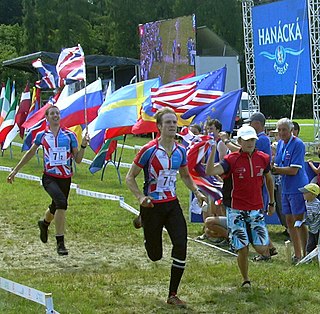
A relay race is a racing competition where members of a team take turns completing parts of racecourse or performing a certain action. Relay races take the form of professional races and amateur games. Relay races are common in running, orienteering, swimming, cross-country skiing, biathlon, or ice skating. In the Olympic Games, there are several types of relay races that are part of track and field. Relay race, also called Relay, is a track-and-field sport consisting of a set number of stages (legs), usually four, each leg run by different members of a team. The runner finishing one leg is usually required to pass the next runner a stick-like object known as a "baton" while both are running in a marked exchange zone. In most relays, team members cover equal distances: Olympic events for both men and women are the 400-metre and 1,600-metre relays. Some non-Olympic relays are held at distances of 800 m, 3,200 m, and 6,000 m. In the less frequently run medley relays, however, the athletes cover different distances in a prescribed order—as in a sprint medley of 200, 200, 400, 800 metres or a distance medley of 1,200, 400, 800, 1,600 metres.
Medley is a combination of four different swimming styles—backstroke, breaststroke, butterfly, and freestyle—into one race. This race is either swum by one swimmer as individual medley (IM) or by four swimmers as a medley relay.

Swimming has been a sport at every modern Summer Olympics. It has been open to women since 1912. At the Olympics, swimming has the second-highest number of medal-contested events.
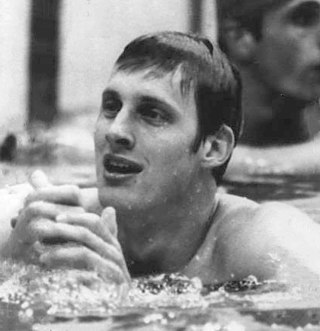
The men's 100 metre freestyle event at the 1976 Summer Olympics took place between July 24 and 25. This was the first time in history that the 100m freestyle was swum under 50 seconds. There were 41 competitors from 27 nations. Nations had been limited to three swimmers each since the 1924 Games. The event was won by Jim Montgomery of the United States, the nation's second consecutive and tenth overall victory in the men's 100 metre freestyle. His countryman Jack Babashoff took silver. Peter Nocke's bronze was the first medal for West Germany in the event, though the United Team of Germany had won a bronze in 1964.
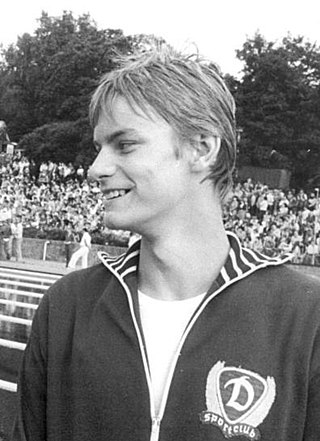
The men's 100 metre freestyle event at the 1980 Summer Olympics was held on 26 and 27 July at the Swimming Pool at the Olimpiysky Sports Complex. There were 39 competitors from 26 nations. Nations had been limited to three swimmers each since the 1924 Games. The event was won by Jörg Woithe of East Germany, the nation's first medal in the men's 100 metre freestyle. Sweden earned its first medals in the event since 1952 with Per Holmertz's silver and Per Johansson's bronze.
This article includes the world record progression for the 4×100 metres medley relay, and it shows the chronological history of world record times in that competitive swimming event. The 4×100 metres medley relay is a medley race in which each of four swimmers on a team swims a 100-metre leg of the relay, each swimming a different stroke, in the following sequence:
- Backstroke ;
- Breaststroke;
- Butterfly;
- Freestyle.
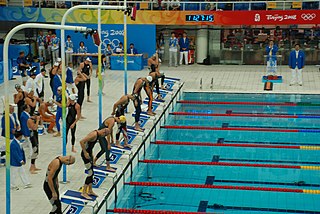
Swimming is an individual or team racing sport that requires the use of one's entire body to move through water. The sport takes place in pools or open water. Competitive swimming is one of the most popular Olympic sports, with varied distance events in butterfly, backstroke, breaststroke, freestyle, and individual medley. In addition to these individual events, four swimmers can take part in either a freestyle or medley relay. A medley relay consists of four swimmers who will each swim a different stroke, ordered as backstroke, breaststroke, butterfly and freestyle.

Freestyle is a category of swimming competition, defined by the rules of the International Swimming Federation (FINA), in which competitors are subject to a few limited restrictions on their swimming stroke. Freestyle races are the most common of all swimming competitions, with distances beginning with 50 meters and reaching 1,500 meters, also known as the mile. The term 'freestyle stroke' is sometimes used as a synonym for 'front crawl', as front crawl is the fastest surface swimming stroke. It is now the most common stroke used in freestyle competitions.
The women's 4 × 100 metre medley relay event at the 1964 Olympic Games took place on 16 October (qualification) and 18 October (final). This swimming event uses medley swimming as a relay. Because an Olympic size swimming pool is 50 metres long, each of the four swimmers completed two lengths of the pool, each using a different stroke. The first on each team used the backstroke, the second used the breaststroke, the third used the butterfly stroke, and the final swimmer used freestyle.

The men's 100 metre freestyle event at the 1960 Olympic Games took place between August 26 and 27. There were 51 competitors from 34 nations. Nations were limited to two swimmers each, down from three in previous Games. The event was won by John Devitt of Australia over Lance Larson of the United States in a controversial, disputed finish that resulted in a push for electronic timing. It was Australia's second consecutive victory in the event, third-most all-time behind the United States' 7 gold medals and Hungary's 3. Devitt, silver medalist four years earlier, was the fifth man to win multiple medals in the event. Manuel dos Santos earned Brazil's first medal in the men's 100 metre freestyle with his bronze.
The women's 4 × 100 metre medley relay event at the 1960 Olympic Games took place on August 30 (qualification) and September 2 (final). This swimming event uses medley swimming as a relay. Because an Olympic size swimming pool is 50 metres long, each of the four swimmers completed two lengths of the pool, each using a different stroke. The first on each team used the backstroke, the second used the breaststroke, the third used the butterfly stroke, and the final swimmer used freestyle.

The men's 100 metre freestyle event at the 1964 Olympic Games took place between October 11 and 12. There were 66 competitors from 33 nations. Nations were again able to bring up to three swimmers each after a one-Games limit of two in 1960. The event was won by Don Schollander of the United States, the nation's first victory in the event since 1952 and eighth overall. Great Britain and the United Team of Germany both earned their first medal in the men's 100 metre freestyle.
The men's 4 × 100 metre medley relay event at the 1964 Olympic Games took place on October 15 (qualification) and October 16 (final). This swimming event uses medley swimming as a relay. Because an Olympic size swimming pool is 50 metres long, each of the four swimmers completed two lengths of the pool, each using a different stroke. The first on each team used the backstroke, the second used the breaststroke, the third used the butterfly stroke, and the final swimmer used freestyle.
The men's 4×100 metre medley relay event at the 1968 Olympic Games took place on October 26. This swimming event uses medley swimming as a relay. Because an Olympic size swimming pool is 50 metres long, each of the four swimmers completed two lengths of the pool, each using a different stroke. The first on each team used the backstroke, the second used the breaststroke, the third used the butterfly stroke, and the final swimmer used freestyle.
The women's 4×100 metre medley relay event at the 1968 Olympic Games took place on 17 October. This swimming event uses medley swimming as a relay. Because an Olympic size swimming pool is 50 metres long, each of the four swimmers completed two lengths of the pool, each using a different stroke. The first on each team used the backstroke, the second used the breaststroke, the third used the butterfly stroke, and the final swimmer used freestyle.

The men's 100 metre freestyle event at the 1972 Olympic Games took place between September 2 and 3. There were 48 competitors from 29 nations. Nations had been limited to three swimmers each since the 1924 Games. The event was won by Mark Spitz of the United States, his then-record sixth gold medal in a single Games. It was the ninth victory in the event for an American, most of any nation. Jerry Heidenreich, also of the United States, took silver. Soviet swimmer Vladimir Bure earned bronze, the nation's first medal in the men's 100 metre freestyle.
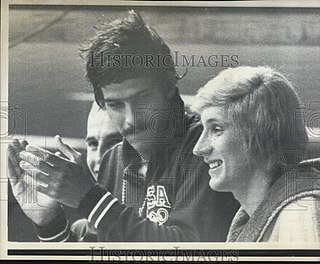
The men's 200 metre freestyle event at the 1972 Summer Olympics took place on August 29 at the Olympia Schwimmhalle. There were 46 competitors from 27 nations, with each nation having up to three swimmers. The event was won by Mark Spitz of the United States, the nation's second victory in the event. It was the third gold medal for Spitz in 1972, halfway to his goal of six. His teammate Steve Genter took silver, with Werner Lampe of West Germany earning bronze. Defending champion Michael Wenden of Australia finished fourth.
The men's 4 × 100 metre medley relay event at the 1972 Olympic Games took place on September 4. This swimming event uses medley swimming as a relay. Because an Olympic size swimming pool is 50 metres long, each of the four swimmers completed two lengths of the pool, each using a different stroke. The first on each team used the backstroke, the second used the breaststroke, the third used the butterfly stroke, and the final swimmer used freestyle.
The women's 4 × 100 metre medley relay event at the 1972 Olympic Games took place on September 3. This swimming event uses medley swimming as a relay. Because an Olympic size swimming pool is 50 metres long, each of the four swimmers completed two lengths of the pool, each using a different stroke. The first on each team used the backstroke, the second used the breaststroke, the third used the butterfly stroke, and the final swimmer used freestyle.
The mixed 4 × 100 metre medley relay event at the 2020 Summer Olympics was held in 2021 at the Tokyo Aquatics Centre. These Games marked the first time to feature a mixed-gender swimming event in the program. Each 4-person team features two male and two female swimmers in no particular order.











